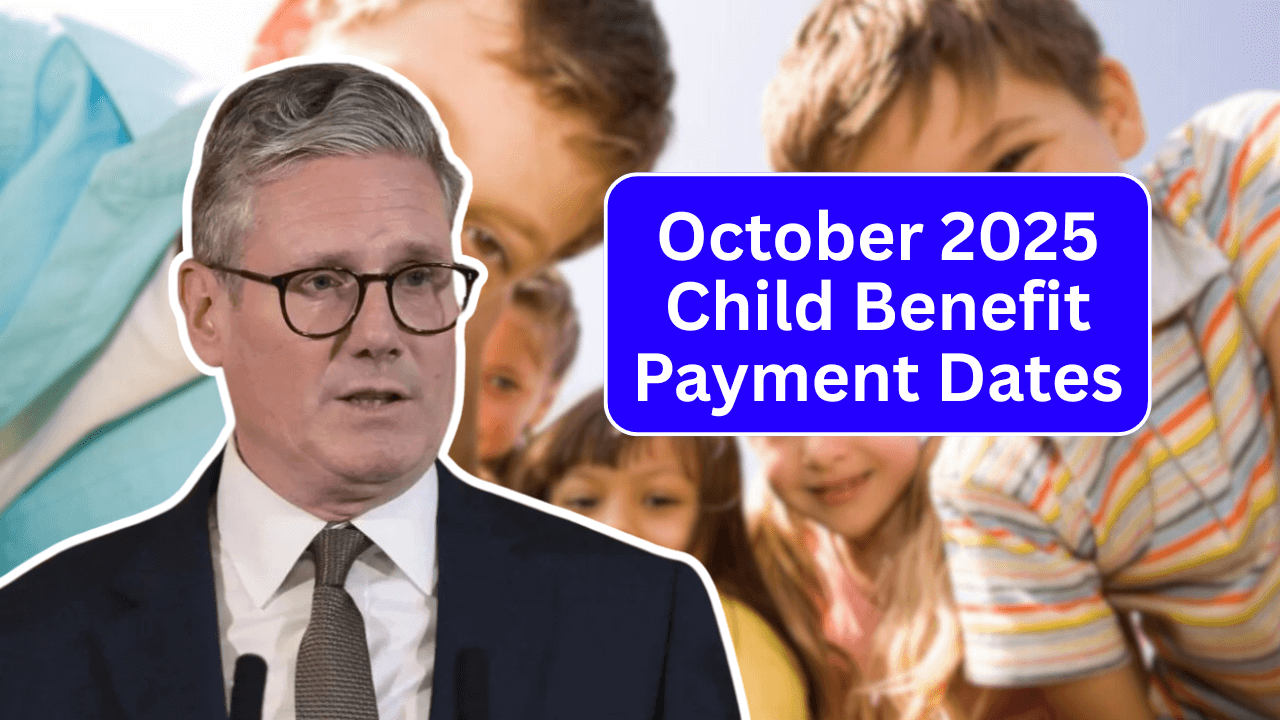Child Benefit is a vital financial support for families in the UK, helping with the costs of raising children. Understanding the payment schedule, eligibility criteria, and potential tax implications is essential for recipients. This article provides a comprehensive guide to the October 2025 Child Benefit payment dates, eligibility requirements, and associated amounts.
Child Benefit Payment Schedule for October 2025
Child Benefit is typically paid every four weeks, either on a Monday or Tuesday. However, if a payment date coincides with a bank holiday, the payment is usually made on the preceding working day. For October 2025, the payment dates are as follows:
- Monday, 6 October 2025: Payments will be made on Friday, 3 October 2025.
- Monday, 13 October 2025: Payments will be made on Friday, 10 October 2025.
- Monday, 20 October 2025: Payments will be made on Friday, 17 October 2025.
- Monday, 27 October 2025: Payments will be made on Friday, 24 October 2025.
These dates ensure that families receive their payments promptly, even when bank holidays occur.
Eligibility for Child Benefit
To qualify for Child Benefit, you must be responsible for a child who is:
- Under 16 years old, or
- Under 20 years old if they remain in approved education or training.
Only one person can claim Child Benefit for a child. You are considered responsible for a child if you:
- Live with them, or
- Contribute at least an equivalent amount towards their upkeep, such as food, clothing, or pocket money.
Additionally, if you are fostering or adopting a child, you may be eligible for Child Benefit, provided that the local council is not contributing to the child’s accommodation or maintenance costs.
Child Benefit Rates for October 2025
As of the 2024–2025 tax year, the weekly rates for Child Benefit are:
- £25.60 per week for your first or only child.
- £16.95 per week for each additional child.
These rates are subject to change in subsequent tax years, so it’s advisable to check the latest information on the official GOV.UK website.
High Income Child Benefit Charge
If you or your partner have an individual income over £60,000, you may be liable for the High Income Child Benefit Charge. This charge effectively reduces or nullifies the benefit received. The charge is calculated through Self Assessment and is based on your adjusted net income, which includes taxable income before any allowances.
If both you and your partner have incomes over the threshold, the person with the higher income is responsible for paying the charge. You can choose to either:
- Continue receiving Child Benefit payments and pay the tax charge, or
- Opt out of receiving payments and avoid the charge.
For more information and to estimate your potential tax charge, you can use the Child Benefit tax calculator.
How and When Child Benefit Is Paid
Child Benefit is paid directly into your bank, building society, or credit union account. It cannot be paid into a Post Office card account or a Nationwide Cashbuilder account in someone else’s name. You can only have your payments made into one account.
If your payment date falls on a weekend or bank holiday, you will usually receive your payment on the preceding working day. However, as noted earlier, specific dates may vary, so it’s essential to refer to the official payment schedule.
Reporting Changes Affecting Your Child Benefit
It’s crucial to inform HM Revenue and Customs (HMRC) of any changes that may affect your Child Benefit entitlement. This includes changes in your child’s education status, living arrangements, or if they start earning above a certain threshold. Failing to report such changes can lead to overpayments, which you may be required to repay.
You can report changes online through the Child Benefit service.
Claiming Child Benefit
You can claim Child Benefit as soon as your child is born or comes to live with you. Claims can be made online through the GOV.UK website. It’s advisable to make the claim within three months of the event to ensure you receive any backdated payments.
If you choose not to receive Child Benefit payments, you should still fill in the claim form. This allows you to:
- Receive National Insurance credits, which count towards your State Pension, or
- Obtain a National Insurance number for your child without them having to apply for one.
Conclusion
Understanding the Child Benefit payment schedule, eligibility criteria, and associated rates is essential for families in the UK. By staying informed and reporting any changes promptly, you can ensure that you receive the financial support you’re entitled to. For the most accurate and up-to-date information, always refer to the official GOV.UK website.
